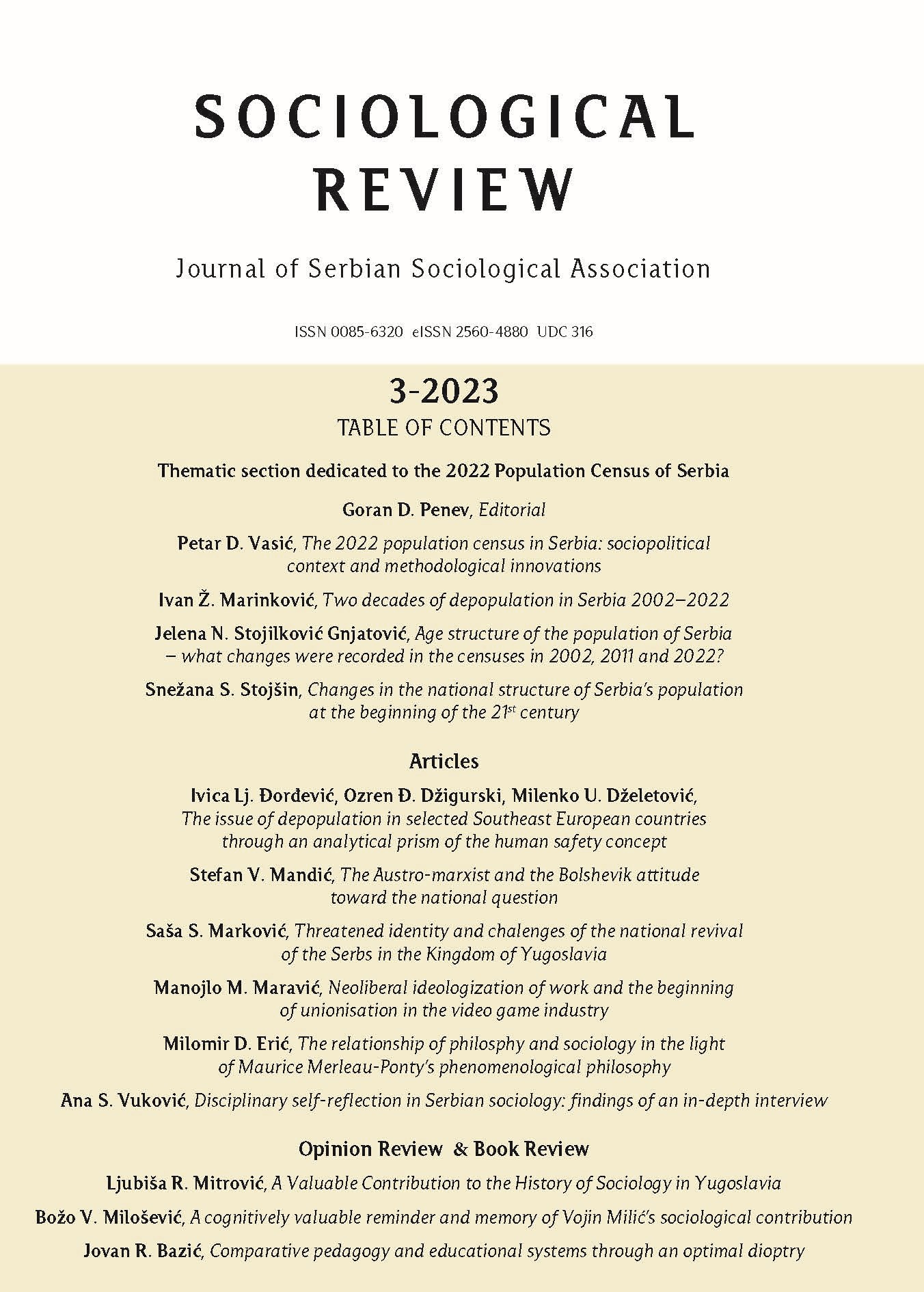Age structure of the population of Serbia – what changes were recorded in the censuses in 2002, 2011 and 2022?
Age structure of the population of Serbia – what changes were recorded in the censuses in 2002, 2011 and 2022?
Author(s): Jelena N. Stojilković GnjatovićSubject(s): Social Sciences, Geography, Regional studies, Human Geography, Sociology, Methodology and research technology, Social development, Demography and human biology
Published by: Српско социолошко друштво
Keywords: age structure;population ageing;population censuses;demographic age stages;Serbia
Summary/Abstract: The aim of the paper is to depict the broader picture of the level of age structure transformation in Serbia, based on the data of the last three censuses (2002, 2011 and 2022). The historical conditioning of the age (pre)composition is explored through the basic determinants of the age structure. In order to monitor the advanced process of demographic ageing, age structure indicators have been calculated, and temporal and spatial comparisons were made. In a comparative manner, the population of Serbia is also put into relation to other European countries, using the methodology of demographic age stages. A more detailed analysis at the municipality level showed that 88.7% of the municipalities were in the demographic deepest old age. Thus, the classification was extended by adding demographic extremely deep old age that is characteristic of 39.2% municipalities in Serbia.
Journal: Социолошки преглед
- Issue Year: 57/2023
- Issue No: 3
- Page Range: 792-822
- Page Count: 31
- Language: English, Serbian

